Marking the centenary of the First World War Armistice with all sorts of local war memorials
This article contains affiliate links. We may earn a small commission on items purchased through this article, but that does not affect our editorial judgement.
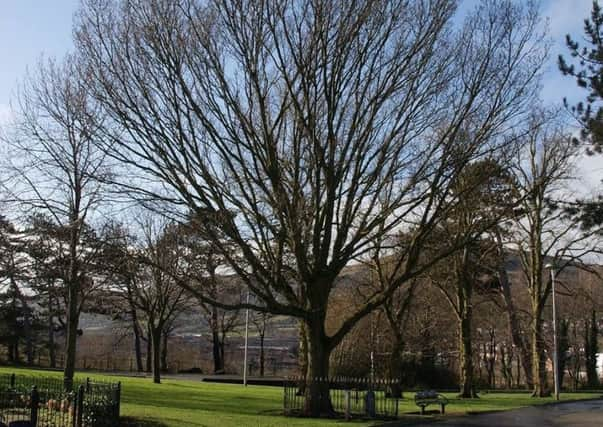

Entitled Ulster War Memorials is HHU’s first ever hardback publication.
Whilst HHU researcher Nigel Henderson had already photographed many memorials in Ulster, the main driving force behind the book is HHU chair Gavin Bamford, who has had a long-standing interest in war memorials.
Advertisement
Hide AdAdvertisement
Hide AdIn the preface Gavin writes: “I first began to take an interest in war memorials whilst researching the employees of the Belfast Banking Company and the Northern Banking Company who gave their lives in the Great War.
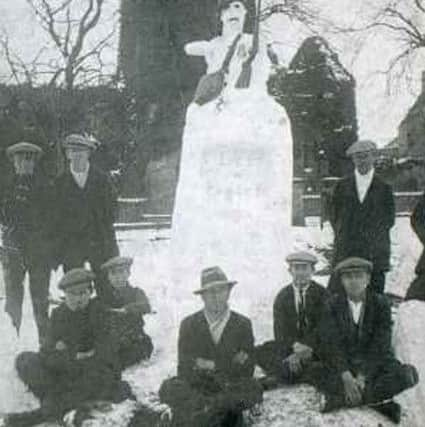

“In addition to brass tablets listing those who served and the fatalities, both banks produced a series of studio portraits of the men. Currently, the brass tablets and portraits are located in the head office building of Northern Bank t/a Danske Bank. They are displayed in the basement and only accessible to the general public on request.”
Gavin’s initial interest in war memorials that have been hidden, lost, or destroyed over time, began whilst he was enjoying a cup of coffee in Belfast’s Flame restaurant on Howard Street.
“I noticed a plaque and, being curious, I went over to have a look. It transpired to be a commemoration of the laying of the foundation stone for the Presbyterian War Memorial Hostel in 1923. The stone had been covered over at some stage in the past…and had been uncovered during renovations by the current owners.
Advertisement
Hide AdAdvertisement
Hide Ad“They decided to retain the stone as part of the fabric and history of the building. More recently, I identified that the war memorial tablet from Elmwood Presbyterian Church in Belfast, which closed in the early 1970s, was held in a store room in Elmwood Presbyterian Church in Lisburn. Whilst, I knew about the war memorial tablets in Central Station in Belfast and Connolly Station in Dublin, I only recently discovered that a tablet had also been erected in the Londonderry terminus.
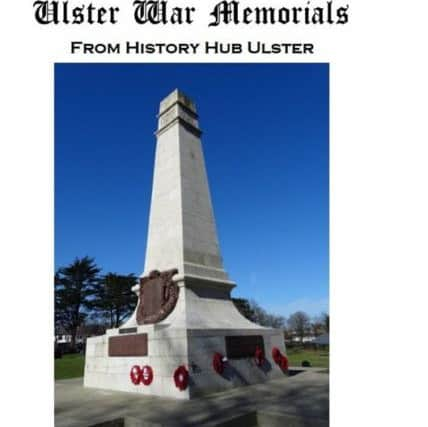

“It is in storage and I have initiated steps to get it renovated and re-erected. It is my hope that the memorials for the men from the three local railway companies will be brought together in one location in Weaver’s Cross, the new Belfast Transport Hub.”
Nigel Henderson had the task of compiling material relating to war memorials in Ulster, covering all nine counties of Ulster and identifying unique and interesting examples to feature in a 40 page book. No easy task, given the wide range of types of memorials and the research presented distractions – for example, German Trophy Guns and War Memorial Orange Halls.
Though the initial concept was for a coffee table book, the final product goes a lot further, whilst remaining true to the original idea of focusing on public memorials which have an aspect that is unusual or unique.
Advertisement
Hide AdAdvertisement
Hide AdThere is at least one war memorial included from each of the nine counties of Ulster in the book – some of the memorials are monuments (cenotaphs, obelisks, statues, etc), some had a practical or community aspect and some were introduced as competition trophies by sporting associations.
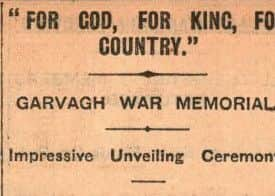

The book identifies the largest war memorial constructed in the inter-war years as well as the tallest memorial.
For the memorials featured, research was conducted using newspapers and other online resources to find details about the designers, sculptors or builders of the memorials along with dates of erection and dedication.
Public or town war memorials take many different forms.
There are cenotaphs, for example in Belfast, Cookstown, Larne, Newry and the Co Tyrone Memorial in Omagh.
Advertisement
Hide AdAdvertisement
Hide Ad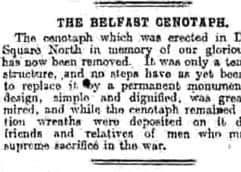

There are obelisks, such as those in Ballynahinch, Kilrea, Ballymena, Tandragee and Kingscourt.
There’s a Temple in Lurgan, ‘Victory’ figures in Lisburn, Portrush and Londonderry; soldier statues in Enniskillen, Downpatrick, Dromore and Holywood, and Celtic Crosses in Cregagh and Hillsborough.
Other types of memorials included in the book are clock towers, tablets, church memorials and plaques and there’s even a snowman memorial that was made in Newtownards in March 1924.
In the book’s forward, local historian and author, Philip Orr writes: “Both during and after the Great War, a remarkable and diverse array of memorials was created in Ireland, as indeed happened across these islands. These local memorials often located grief and commemoration in tangible, meaningful ways within particular civic, sacred or familial spaces.
Advertisement
Hide AdAdvertisement
Hide Ad“Nigel Henderson’s work plays an important role in drawing our attention to the subject, a century later. Despite problems caused by Northern Ireland’s political fractures and by the lack of funds in an inter-war era of poverty and economic downturn, the work went ahead – and Nigel’s thorough and revealing account gives the reader an insight into the motivations and practice of those involved in Ulster’s own memorialisation process. Most of these projects still survive to this day, though some are long gone.”
A chapter in the book concentrates on memorials produced by sporting organisations, but the main focus throughout is on public memorials erected to commemorate those from a defined locality.
There is a chapter that relates to women who died as a result of the war, with a focus on the Irish Nurses Memorial in St Anne’s Cathedral in Belfast and a chapter on memorials with which the Holywood born sculptor Sophia Rosamund Praeger was associated.
Further details about the book are at http://historyhubulster.co.uk/ulster-war-memorials or on Facebook www.facebook.com/UlsterWarMemorialsHistoryHubUlster.